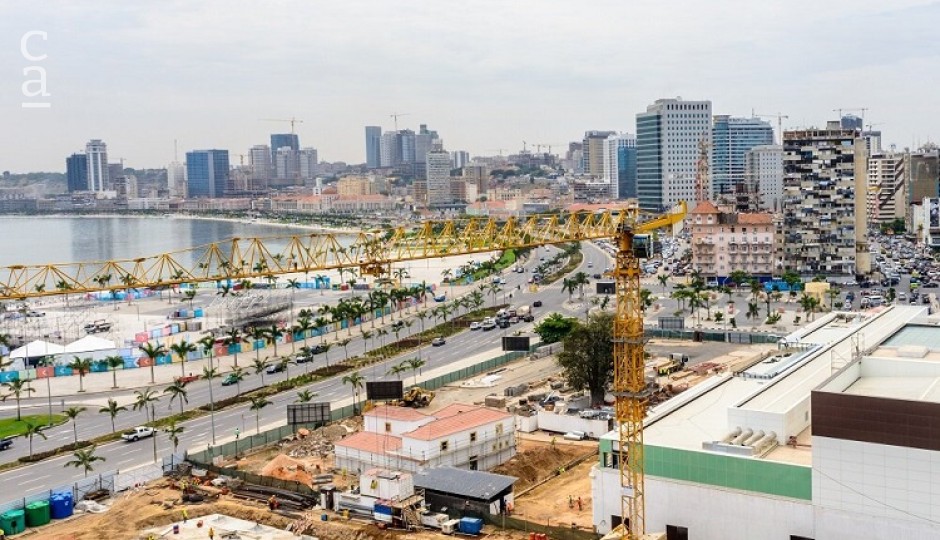Is construction the best driver of the economy in Africa?
There is no question that the construction industry is an economic engine in developing countries where the population is rapidly growing and urbanising.

In fact, many researchers and international bodies have looked into the role of construction in the economic growth and development of various low-income countries.
Interestingly, even though the industry has faced some challenges in previous years, last year’s COVID-19 crisis didn’t seem to hinder its growth.
A report released by Deloitte Kenya indicated that the construction market in Africa would continue to expand through 2020 and beyond. The COVID-19 crisis may have taken a toll on the global economy, but it seems that there is no stopping Africa’s construction industry from expanding. Let’s take a look at how construction may bring about the best economy in Africa.
Construction and Its Economic Role in Africa
The construction market is one of the most important contributors to economic growth. For example, a report from Statistics South Africa shows that construction employs more than 1.18 million people on a permanent or contract basis in the country. The same report shows that the South African government also received 19% of the value created by the industry in the year 2014, all from direct taxes and taxes on employee salaries.
Still in South Africa, the construction industry is dominated by large and renowned players. The country’s largest listed construction players by market capitalisation include the following:
- Pretoria Portland Cement Company
- Murray and Roberts
- Aveng
- Wilson Bayly Holmes-Ovcon (WBHO)
- Raubex
- Group Five
- Distribution and Warehousing Network
- Stefanutti Stocks and Sephaku
- Afrimat
These players are likely to expand to other African countries as well. They all have public infrastructure projects and private real estate builds, which represent the two biggest growth drivers in South Africa’s construction industry, as overseen by the Department of Public Works.
The Department of Public Works acts as the state handyman and regulates the industry. It is basically responsible for managing state-owned infrastructure. It oversees the Expand Public Works Programme, which is a job creation initiative that employs unskilled and semi-skilled labourers in the execution of public projects.
The African Construction Market, Trends, Impact, and Forecasts
With the construction industry under a significant paradigm shift in growth, it has been determined that sub-Saharan Africa would yield a compound annual growth rate of 6.6% from 2018-2022. This places the region as the fastest-growing construction hub globally, which is why Africa is easily one of the key players in infrastructure in the next 5 years or so.
To better understand its economic role, it is worth noting that the construction market in the continent is segmented by region, sector, and by construction types.
- Region – Southern Africa, Western Africa, Northern Africa, and Eastern Africa
- Sector – Residential Constructions, Commercial Constructions, Industrial Constructions, Infrastructure (Transportation Constructions and Energy and Utility Constructions)
- Construction Type – New Constructions, Demolition, Additions
The region with the largest number of recorded projects is reported to be East Africa. As a region, North Africa is reported to have the largest share of projects in terms of value at 31.5%. These projects are spread over 43 out of Africa’s 54 countries. The single country with the most projects, making up 9.5% of projects on the entire continent, is Egypt, followed by South Africa and Nigeria respectively.
The sector with the greatest number of projects at 22.7% is the Transport sector, with a total of 186 ongoing projects. It is followed by power and energy projects which have a share of 24.4% of the total value.
Based on projected annual growth rate, these are the top 4 countries leading Africa’s construction market:
- Ethiopia – 12.7%
- Tanzania – 9.3%
- Zambia – 7.7%
- Nigeria – 4.6%
Although 4.6% doesn’t seem that much, it’s worth noting that Nigeria is Africa’s giant by population. Its 4.6% estimated growth will most likely account for 60% of West Africa’s construction activities, possibly placing Nigeria as the best economy in Africa.
Along these developments are the concerns of the industry’s major stakeholders on the cost of projects, execution, and management. This is where construction technology comes into the picture, which we will touch in brief over the next few sections in this post.
Construction Technology in the African Market
The adoption of the latest construction technology is forecast to increase productivity within the African construction industry by up to 40%. Some construction firms are employing the following tools in their operations to increase productivity:
Wearable Technology
This technology goes beyond Fitbits, 3D wears, and armbands that enable workers to commute effectively and navigate sites without physical instruction manuals. Wearable technology also enables the location of construction workers, especially in cases of falling from heights accidents. The adoption of these technologies is worth investing in for a safer work plan for workers on site.
Building Information Modelling
Many construction stakeholders believe that building information modelling or BIM can improve design insight. This tool benefits every phase of a project, including the creation and managing of project information down to its execution. In essence, BIM contains digital descriptions of all aspects of the project.
With BIM, there is better visioning, communication, sharing, and collaboration among teams. It also makes effective construction cost estimation possible. From 3D visualization of pre-construction projects to clash detection and improved site coordination, the construction process is made easier and faster with this technology.
Modularization
The execution of construction projects becomes 50 times faster and safer through modularization. This construction tool involves the use of standard processes to assemble buildings offsite before progressing into onsite construction, leading to a cut down on building costs and time. It also provides an eco-friendly working environment for workers.
Through modularization, construction firms can benefit from the use of recyclable construction materials and the reduced health risks associated with traditional construction environments.
In Conclusion
With the COVID-19 crisis, the African construction industry may have experienced a slowdown, but it’s likely to recover in the near term. There are new opportunities for smaller players and major infrastructure projects (particularly in the transport and utilities sector), which could secure the industry before the end of the decade. Not to mention, private residential builds will continue to expand and provide economic stability.
ConstructAfrica has put together reports on the construction industry in various African countries, which provide valuable insights into the industry in these countries and highlight opportunities and roadmaps for accessing these opportunities. You can find these reports on the Insights page of our website, or by clicking here.
For the latest updates and news on Africa’s construction industry, check out ConstructAfrica. Explore our website to learn more.
Photo: Panorama of Luanda, Angola, showing construction crane (Siempreverde22 | Dreamstime)




